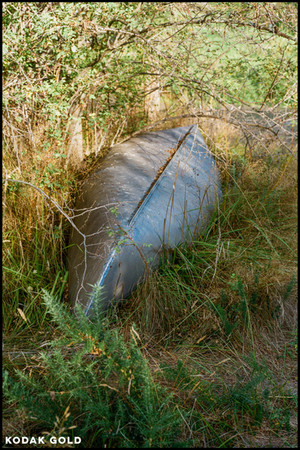Film Comparison: Kodak Gold v.s. Kodak Color plus
- Lo
- Nov 14, 2023
- 3 min read
At Bay Photo, we have a great selection of film stocks. Understanding what sets each film apart can help you pick the perfect film for any occasion. I recently compared Kodak Gold and Kodak Color Plus, two budget-friendly and popular film stocks we carry at bayphotofilm.com.
Before this project, I had little experience with either of these films, so I looked forward to seeing the results and understanding some of their differentiating traits. To test them and investigate how these two films perform side by side, I teamed up with my brother Danny during our trip to the family farm in British Columbia. The results were interesting, revealing both notable features of these films and some similarities that we were surprised to discover.
The family farm was an ideal place for our experiment, offering lots of textures, colors, and scenic landscapes, providing a wide variety of subjects for our test. We used similar cameras to give a fair comparison, focusing on the film rather than the equipment. I went with my Canon Rebel 2000 with a 50mm f1.8 lens, and Danny used a Nikon 9F with a matching lens. We loaded our film, I chose to use Kodak Gold, and Danny loaded his camera with Kodak Color Plus. We paired our settings, and one after another, we snapped shots of the same scenes, finding compositions that focused on details, textures, and colors.
We started at the farmhouse and then walked down the hill to the three old bird coops. One Coop was for chickens, one for ducks, and the other for turkeys; all were vacant. We photographed a few of each. When one of us saw a good shot, we would call it out and line up our aperture and shutter speeds, then one of us would snap the first shot, and the other would follow. It was a fun experiment, something neither of us had attempted before. In only two hours, we studied the area from the house to the barn, down by the lake, and back up again, finishing the shoot just before sunset. Then came the most challenging and rewarding part of film photography – waiting for the results.
Initially, when we compared our photos side by side, many looked very similar in color--the yellows, blues, and greens appeared almost identical with both film stocks. However, the moment we saw the photos we each took of a cluster of Amaranthus flowers, the distinction between the two film stocks became more evident.
Kodak Gold seemed to infuse the flowers with a warm, rich tone, giving them a deeper shade of red. In contrast, Kodak Color Plus presented the same flowers with a cooler magenta hue, proving to be a more accurate representation of the flowers' true colors. These variances served as a reference point for us, helping us identify similar differences in our other pairs of photos.
Our findings revealed that the Kodak Gold 200 film evoked nostalgia, casting a warm, golden glow (hence the name) that added a cinematic and dreamy charm to the photos. Reds and oranges, in particular, appeared warmer and richer, making it an excellent choice for capturing that magical golden-hour light, provided you have enough light on your subject and dial in the correct settings. On the other hand, Kodak Color Plus 200 turned out to be a better film for documentation. Its colors better depict reality, highlighting what we might see more closely with the human eye. Notably, both films did a great job in making shadows distinct and keeping highlights well-balanced; Gold only performed a hair better in this area.
Ultimately, this experiment was both enlightening and enjoyable! It challenged my preconceived notions about these two films, which I initially believed were wildly different. I had previously steered clear of them due to my misconception that both had high saturation levels. After gaining a deeper understanding of their qualities, I plan to bring both Kodak Gold and Kodak Color Plus on future travels, particularly for capturing landscapes and the beauty of golden hour.




















































